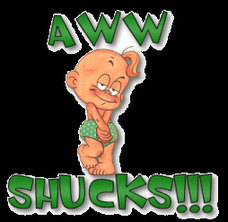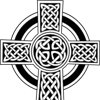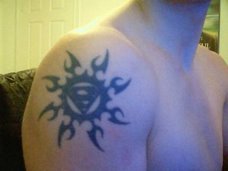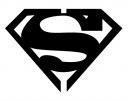Tribal manifestation exists in almost all the cultures on the planet earth since ancient times, so when it comes to talking about tribal art tattoos, the array of forms, shapes and designs is as big as the count of the civilization worldwide. Tribal tattoos were a fashionable trend of the early 1970s when everyone was seeking for new alternatives of life and discovered the art of the "uncivilization".
The boom of African and Caribbean forms of human expressions, music, culture and art during that decade made tribal tattoos a new philosophy of life. Although the 1980s put Tribal Art Tattoos behind the vogue scene, new cultural manifestations remained closely linked to them, such as the Celtic and Hawaiian tattooing art.
Tribal Art tattoos came back into the scene in the 1990s with their catch-eye visual appeal, with lending curves and geometrical figures blending softly onto the skin. From primitive art, based only on black or maroon liner, to colorful-rich designs, tribal art tattoos can be applied anywhere on the body, whether as an arm band, on the lower back, or discreetly on the ankle.
One of the main characteristics of modern tribal designs is that people want to wear them for their visual appeal, and sometimes sexually attractive appearance, rather than their association with any particular tribe. Although some individuals wear them with knowledgeable reason.
Nowadays, the trend of tribal art tattoos follows 3 paths; the Polynesian art, including associated cultures such as the Hawaiian, Maori and Samoan, the African trend, based on the ancient tribes of Central and South Africa, with their Caribbean derivations, and the Celtic art, particularly from Scottish and Gaelic origin.
Tattooing is in fact, an activity derived from traditional ceremonies performed by tribal groups with different purposes and idiosyncrasy. Some Pacific Islanders wore tattoos all over their body as a fear factor to keep away bad spirits and enemies. Even today, some forms of urban culture show forceful tribal art tattoos on arms, back, chest, legs, and sometime on the face.
Generally, tribal art tattoos have no meaning by themselves, individually or by group, just being an evocation of the ancient art. However, some forms of tribal tattoos have a meaning that either the individual to be tattooed or the artist performing the tattooing ignore.
Since tribal art tattoo emerged again, in the United States, however the most popular form of tribal tattooing is closely reminiscent to Native American tattoos, if not the real indigenous representation of deities, nature elements, or symbols of power, religion or mystical beliefs.
skip to main |
skip to sidebar
Deerhunter
Cryptograms
Kings of Leon
Because of the Times
The Bastard Fairies
Momento Mori
Fu Manchu
We Must Obey
Black Rebel Motorcycle Club
Baby 81
HELLYEAH
D.O.A.
Bloodied But Unbowed (Reissued)
Two Cow Garage
Alabama Thunderpussy
Open Fire
Saboteur / The Mockingbird Nightmare / Red Light Green
Split EP
Deerhunter
EP
APT's Tattoo Rendezvous
July 12 - 15, 2007@ Embassy Suites HotelKansas City, Missouri
Body Art Expo
July 20 - 22, 2007@ Pomona FairplexLos Angeles, CA
South Florida Tattoo Expo
August 10-12, 2007Deerfield Beach HiltonDeerfield Beach, FL
The 6th Annual Seattle Tattoo Convention
August 10-12, 2007Fisher PavilionSeattle, Wash.
The 5th Hell City Tattoo Festival
August 24 - 26, 2007@ Biltmore Resort & SpaPhoenix, Arizona
Body Art Expo
August 24 - 26, 2007@ Cow PalaceSan Francisco, CA

















OUR LATEST PARTNER
LINK TO US
Do Tattoos Hurt
Need Free Promotion
PUT YOUR ADD HERE
See Our Partners
- SICK SHIT MADE FAMOUS
- NFL NEWS FANTASY TIPS
- YOUR BLOG HERE
- http://mypicturesofcats.blogspot.com
- http://jobsforslobs.blogspot.com
- http://www.freeebookwebsites.com
- http://richgurus.blogspot.com
- http://efreebie.blogspot.com
- http://webpronews.blogspiot.com
- http://ojeezrecipes.blogspot.com
- http://crayondirectadvertising.blogspot.com
- http://100freewebcamchat.blogspot.com
- http://nynursecareer.blogspot.com
- http://mostpopulararticles.blogspot.com
FREE TATTOO CLASIFIEDS
Just Launched:Free Clasifieds For Tattoo Artists.Need To Get The Word Out About Your Shop Contact Me Here I Won't Charge Ya !!
MUSIC HAPPENINGS
Deerhunter
Cryptograms
Kings of Leon
Because of the Times
The Bastard Fairies
Momento Mori
Fu Manchu
We Must Obey
Black Rebel Motorcycle Club
Baby 81
HELLYEAH
D.O.A.
Bloodied But Unbowed (Reissued)
Two Cow Garage
Alabama Thunderpussy
Open Fire
Saboteur / The Mockingbird Nightmare / Red Light Green
Split EP
Deerhunter
EP
UPINCOMING TATTOO CONVENTIONS
APT's Tattoo Rendezvous
July 12 - 15, 2007@ Embassy Suites HotelKansas City, Missouri
Body Art Expo
July 20 - 22, 2007@ Pomona FairplexLos Angeles, CA
South Florida Tattoo Expo
August 10-12, 2007Deerfield Beach HiltonDeerfield Beach, FL
The 6th Annual Seattle Tattoo Convention
August 10-12, 2007Fisher PavilionSeattle, Wash.
The 5th Hell City Tattoo Festival
August 24 - 26, 2007@ Biltmore Resort & SpaPhoenix, Arizona
Body Art Expo
August 24 - 26, 2007@ Cow PalaceSan Francisco, CA
Add-Articles.com: Arts | Tattoos

















Thousands Of Tattoo Designs
View Thousands Of Tattoos From Your Home
Blog Archive
-
▼
2007
(70)
-
▼
June
(58)
- FREE MUSIC DOWNLOADS AND MORE
- ENTER MY STORE HERE
- No title
- FREE HENNA E-BOOKS
- FREE TRIBAL TATTOO DESIGNS
- FREE TRIBAL TATTOO DESIGN PICS
- FREE TRIBAL TATTOO DESIGNS
- TATTOO PICS
- FIND YOUR FREE TATTOO DESIGNS
- 5 TATTOO TIPS TO LIVE BY
- SUPERMAN TATTOO DESIGNS PICS
- BODY ETCHING
- INKLESS TATTOOS
- Fluorescent Tattoos Glow In The Dark
- Celebrity Tattoos and Tattoo DesignsTattoos aren’t...
- TRIBAL ART TATTOOS
- Tattoos Causing Blood Diseases
- Free Tattoo Designs Our Tribal Tattoo Designs Are ...
- See the World's Greatest Collection of Tattoo Designs
- Superman Designs Tattoo Pics
- Hawaiian Armband Tattoo's
- Should You Get a Tattoo? Art Or Destruction?
- Should You Get a Tattoo? Art Or Destruction?
- Tattoos For Woman Where And Why
- Dolphin Tattoos What Do They symbolize
- Why Should I Get a Custom Tattoo
- What Do Anchor Tattoo's Symbolize
- Tattoo Tips To Lice By
- Laser Tattoo Removal How Does It Work
- Celtic Tattoo Design's
- Butterfly Tattoo Designs
- Shootting Star Tattoo's
- Tribal Tattoo Art
- Hawaiian Tattoo's
- Tribal Tattoo's
- Tattoo FAQ
- Brow Piercing And Body Jewlery
- Where To Find Free Tattoo Designs
- Is It Dumb to Want A Tattoo
- Online Tattoo Design Websites
- Custom Tattoo's Or Free Tattoo's
- What Does It Feel Like to Get A Tattoo
- Easy Tattoo Removal
- How To Take Care Of A Fresh Tattoo
- How To Take Care Of A Fresh Tattoo
- 10 Things To Consider Before You Get A Tattoo
- Before You Decide To Get A Tattoo
- Instantly Removable Tattoo Inks
- Girls And Tattoo's
- Tattoos Have Been Showing Up On Thousands Of The W...
- The Steps In Getting A Tattoo
- Custom Tattoo Designs
- FREE TATTOO FLASH
- Safe Tattooing
- The Ultimate Tattoo Collection
- Vital Mistakes Of Chinese Tattoos & How To Avoid T...
- Tatoo Removal
- Tatoo Conventions
-
▼
June
(58)

No comments:
Post a Comment